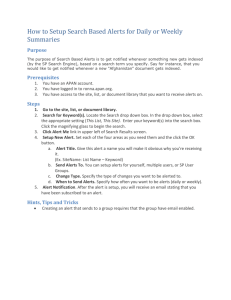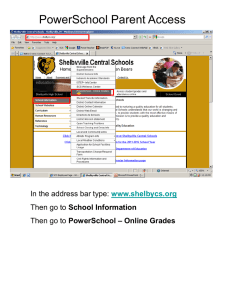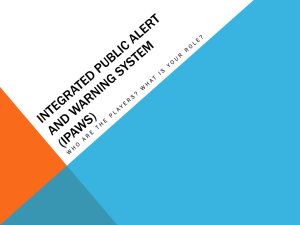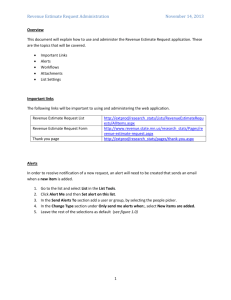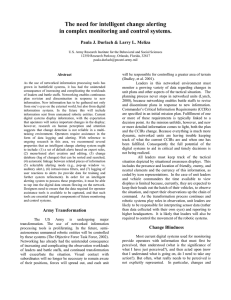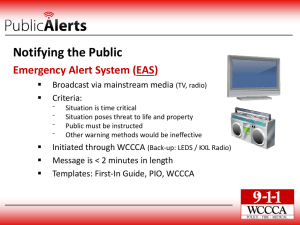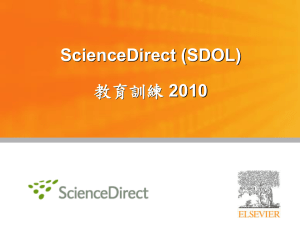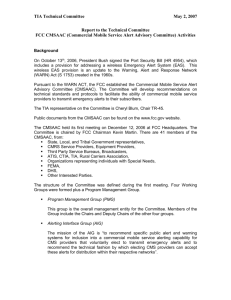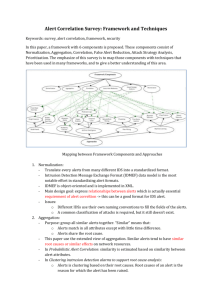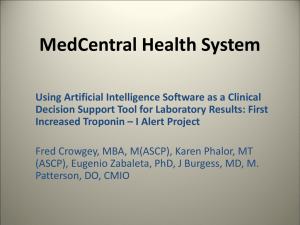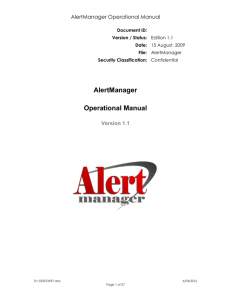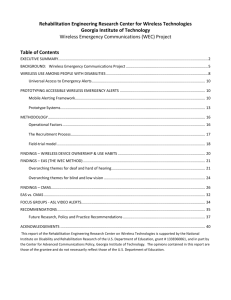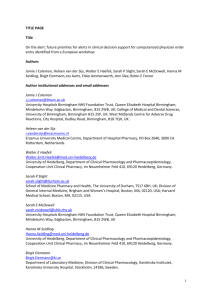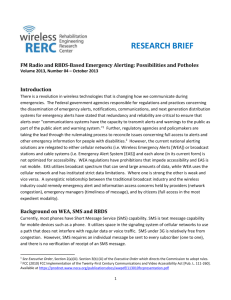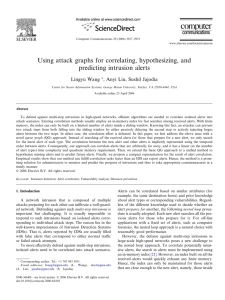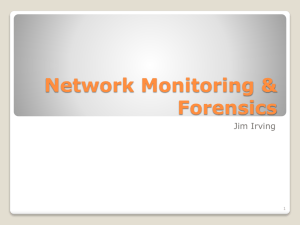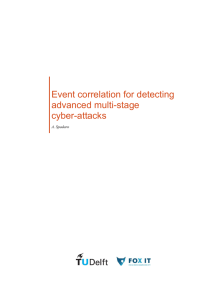on NPSAS - NHS England
advertisement
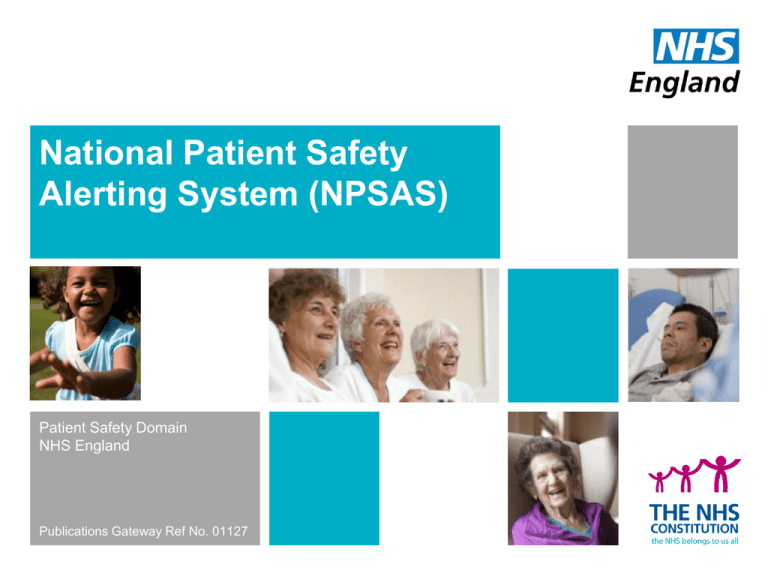
National Patient Safety Alerting System (NPSAS) Patient Safety Domain NHS England Publications Gateway Ref No. 01127 Patient Safety Alerts • A new system was launched in January 2014 for alerting the NHS to emerging patient safety risks. • The new system allows for timely dissemination of relevant safety information to providers, as well as acting as an educational and implementation resource. • It builds on the best elements of the former National Patient Safety Agency (NPSA) system. • It will be known as the National Patient Safety Alerting System (NPSAS). The structure of the National Patient Safety Alerting System • A three-stage system, based on that used in other high risk industries. • Used to disseminate patient safety information at different stages of development, to ensure newly identified risks can be quickly highlighted to providers. • Allows rapid dissemination of urgent information, as well as encouraging information sharing between organisations and providing useful education and implementation resources for use by providers. A three-stage system of alerting Stage One Alert: Warning Warns organisations of emerging risk. It can be issued very quickly once a new risk has been identified to allow rapid dissemination of information. Stage Two Alert: Resource Provision of resources, tools and learning materials to help mitigate risk identified in stage one. Stage Three Alert: Directive Organisations are required to confirm they have implemented specific actions or solutions to mitigate the risk. Example of Stage One: Warning Issues covered by NPSAS alerts Alerts are issued on the basis of a set of agreed principles and may cover issues including the following: 1. New or under recognised patient safety issues; 2. Widespread, common and challenging patient safety issues, not solved by alerts in isolation; or 3. Improving systems for clinical governance, reporting and learning. Advantages of the NPSAS • Gives organisations the opportunity to tackle emerging risk in their own way and to establish a sense of ownership. • Through stage two alerts, organisations will be provided with potential solutions and resources to mitigate the risk. • Encourages voluntary compliance for the early adopters, allowing providers to find solutions that best suit their individual organisations and minimises the requirement for directives. Alert compliance sign-off Providers will be issued with required actions to be signed-off in a set timeframe in accordance with the Central Alerting System (CAS) sign-off process. The actions will be tailored for each patient safety issue. All three stages of alert are likely to be used for issues representing a major risk. However, on occasions it may only be necessary to use part of the alert process. For example, issues of a widespread and well known nature may not require a Stage One: Warning, while those where a clear and specific solution exists may be addressed only with a Stage Three: Directive. Consequences of failing to sign-off stage one, two or three alerts by their deadline • By April 2014, we will publish data monthly on any trusts who have failed to declare compliance with any NPSAS alerts by their due date. • Failure to comply is likely to be used by the CQC in their Intelligent Monitoring System and by commissioners responsibilities for improving quality. • Failure to comply with a Stage Three Alert: Directive within the deadline will be a cause for significant concern on the part of regulators, commissioners and most importantly, patients.. Targeting of alerts to reach relevant audiences • Alerts will be targeted as narrowly as possible in order to keep them relevant to those receiving them. • Target audience will be identified in consultation with the sponsoring NHS England Patient Safety Expert Group (PSEG) and relevant experts. or • In some cases it may be difficult to identify a definitive audience and therefore it may be necessary to issue an alert to a wider audience. Dissemination • Alerts will be disseminated via the Central Alerting System (CAS). • CAS will be used to share alerts with: •Area teams; •CCGs (who register for CAS); •Secondary and tertiary care providers; •Primary care providers (via area teams). • The relevant organisation will be advised of the “expected” audience, but will have the freedom to share more widely as they see fit, recognising local variation in provision of service. Governance for alert development • Responsibility for the development of alerts rests with the NHS England Patient Safety Domain in collaboration with subject experts and relevant organisations. • Alert development will be sponsored, wherever possible, by the relevant NHS England Patient Safety Expert Group (PSEG) • Final approval for all alerts will come from the Director of Patient Safety before they are released.
